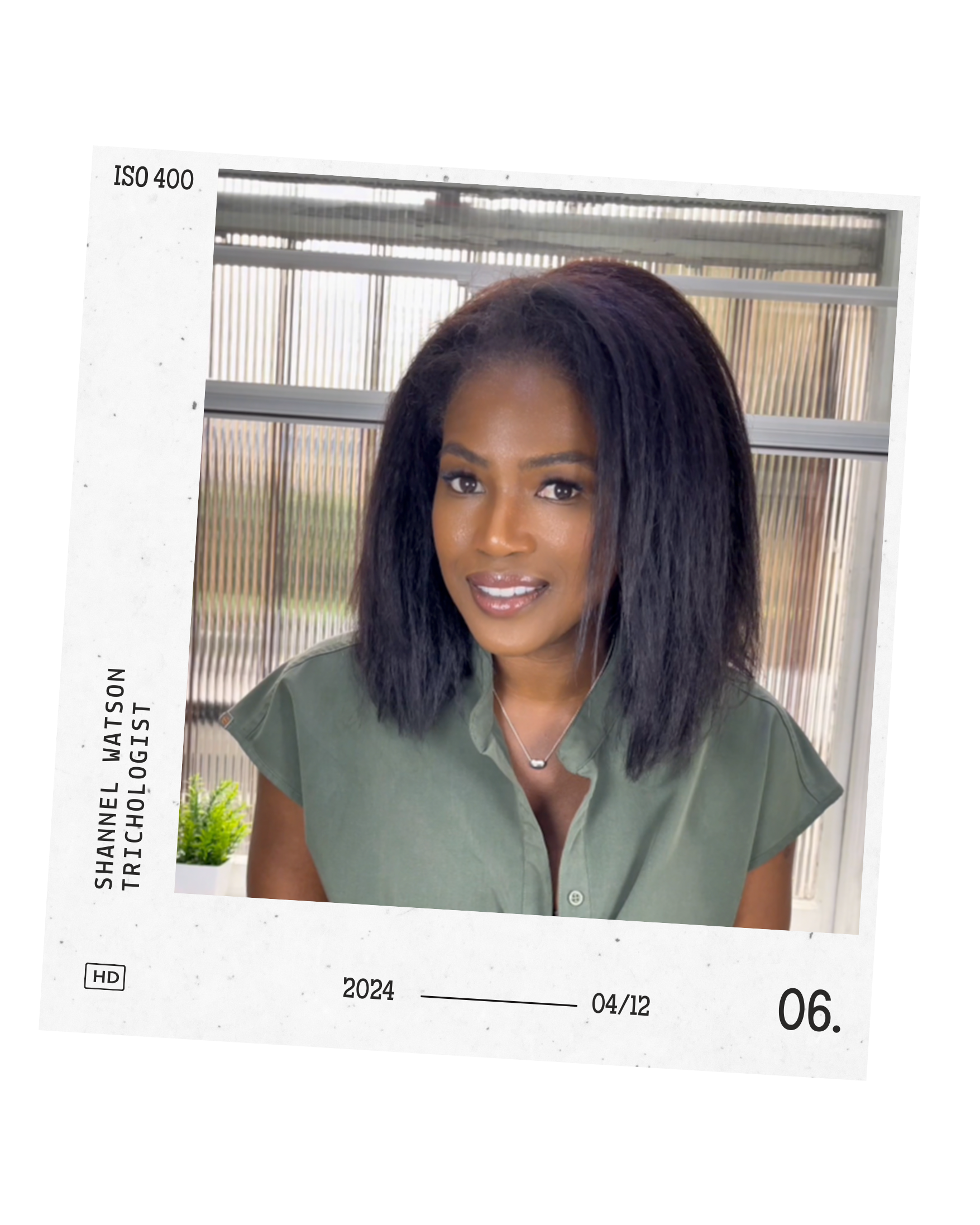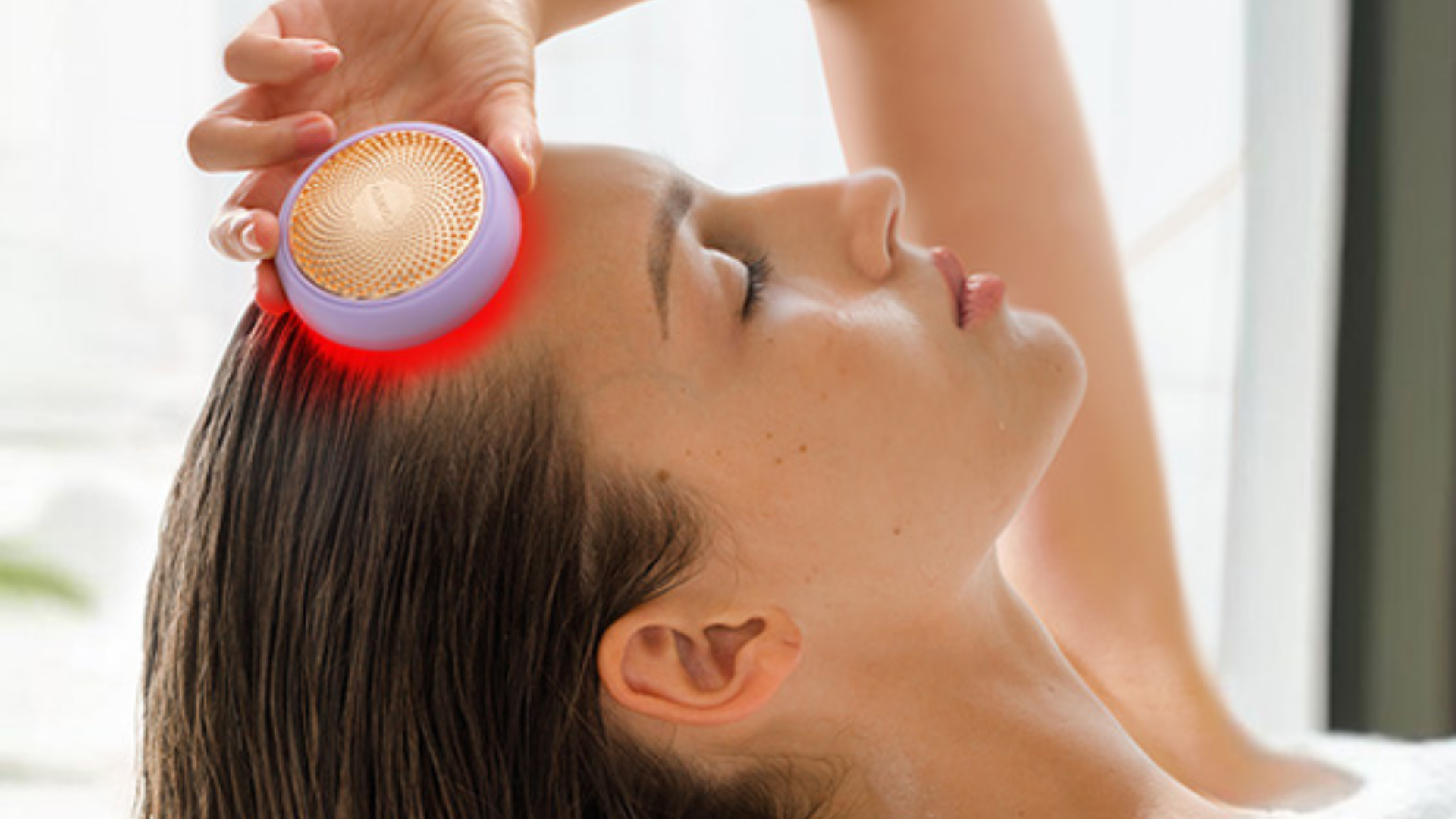Which Hair Loss Types Actually Respond to LED Therapy?
The answer, as always in trichology, is: it depends.

Red light therapy has earned its place in the spotlight for hair growth—particularly in androgenic alopecia, the genetically driven, hormonally influenced pattern hair loss that affects both men and women. But what about other types of hair loss? Can light therapy still lead the way?
Red light (typically in the 630–850 nm range) works by stimulating the mitochondria within our cells—the tiny engines that power energy production. More energy means better repair, better protein synthesis, and, crucially for hair, better growth.
In androgenic alopecia, follicles are still alive—but tired. They’ve been gradually miniaturised by hormonal signalling, and red light helps by boosting the follicle’s metabolic function and elongating the growth phase. Clinical trials show consistent improvements in thickness and density over time and it works best when started early.
For more reactive conditions, like telogen effluvium (sudden, diffuse shedding often caused by stress, illness or diet), red light can support recovery—but only after the trigger has been addressed. Here, the aim is to restore normal cycling, not fight a chronic pattern.
Then there are the complex cases. In lichen planopilaris or other scarring alopecias, inflammation attacks the follicle directly, and once scarring sets in, regrowth becomes unlikely. Red light may help reduce inflammation and support surrounding tissue—but it cannot revive follicles that have been destroyed.
Hair thinning in women, can straddle categories: partly hormonal, partly inflammatory, partly dietary, and sometimes made worse by tension or styling practices. In these cases, red light might help—but likely needs to be paired with topical actives, nutritional support, or injectables.
What about seborrheic dermatitis? That’s where blue light enters the scene. Unlike red light, blue light stays near the skin’s surface and has powerful antimicrobial effects. It can help reduce yeast overgrowth and calm the irritation that leads to itching, flaking, and inflammation—all of which can indirectly affect hair retention.
Efficacy of Red Light Therapy Across Hair Loss Types
Red light therapy is not a silver bullet. While it energises cells, improves blood flow, and enhances follicular function—particularly in androgenetic alopecia—it may not be sufficient for all forms or severities of hair loss.
In cases where inflammation, scarring, or hormonal dysregulation dominate, red light can offer foundational support, but results may plateau without a layered approach. This is where adjunctive therapies come in:
- Scalp Massage & Tissue Mobilisation
Manual or device-assisted massage helps break down fibrotic tissue, improves lymphatic drainage, and enhances the delivery of oxygen and nutrients—making the follicular environment more receptive to LED stimulation.
- Injectables (PRP, Exosomes, Growth Factors)
These treatments introduce regenerative signals directly into the dermis, helping to reactivate dormant follicles and accelerate tissue repair in ways light alone cannot achieve.
- Nutritional & Metabolic Support
Micronutrient deficiencies, gut dysfunction, and systemic inflammation can all impair hair growth. Dietary intervention, supplementation, and blood sugar regulation can stabilise the internal terrain, allowing topical and light-based treatments to work more effectively.
- Stress & Hormonal Modulation
Chronic stress and hormonal imbalance alter follicular cycling. In such cases, addressing cortisol, insulin resistance, or thyroid function may be necessary to create the conditions in which red light can deliver meaningful change.
Red light works best when the system it supports is already primed to respond.
If results are limited or slow, it may be a sign that deeper repair or parallel treatment is needed—not that the therapy has failed.
Research indicates that RLT is most effective for androgenetic alopecia, with studies showing significant improvements in hair density and thickness . For other types like telogen effluvium or alopecia areata, evidence is less robust, and further research is needed to establish efficacy.
Illuminating the Path: LED Therapy Across Hair Loss Types
Light therapy, particularly using red and blue wavelengths, has emerged as a non-invasive approach to managing hair loss. While red light therapy has garnered attention for its efficacy in certain conditions, blue light therapy is also being explored for its potential benefits. Understanding the mechanisms of different hair loss types is crucial to appreciating how LED therapy can be tailored for optimal results.
Red vs. Blue Light: Mechanisms and Applications
Red Light Therapy: Operating within the 630–850 nm wavelength range, red light therapy penetrates deep into the scalp, stimulating mitochondrial activity and enhancing ATP production. This process supports cellular energy metabolism, promoting hair follicle health and growth.
Blue Light Therapy: With shorter wavelengths around 415–495 nm, blue light primarily affects the skin’s surface. It possesses antimicrobial properties, making it effective against conditions like seborrheic dermatitis. Emerging studies suggest that blue light may also stimulate hair growth when combined with other treatments, though its penetration depth is limited compared to red light.
Efficacy Across Hair Loss Types
Androgenetic Alopecia (AGA): Characterized by progressive hair follicle miniaturization due to genetic and hormonal factors, AGA responds well to red light therapy. Clinical studies have demonstrated significant improvements in hair density and thickness with consistent red light treatments.
Diffuse Hair Loss (Telogen Effluvium): Often triggered by stress, hormonal changes, or nutritional deficiencies, this condition leads to widespread hair shedding. Red light therapy may aid recovery by enhancing cellular metabolism and promoting a return to the anagen (growth) phase. However, addressing underlying causes remains paramount.
Hairline Recession: Typically an early sign of androgenic alopecia, hairline recession may benefit from red light therapy, especially when started early. Combining red light therapy with treatments targeting hormonal factors, such as DHT blockers, can enhance outcomes.
Scarring Alopecias (e.g., Lichen Planopilaris): These conditions involve permanent hair loss due to follicular destruction from inflammation. While red light therapy's anti-inflammatory properties might offer some benefit, its efficacy is limited once scarring has occurred. Early intervention is critical, and red light therapy should be considered as an adjunctive to other therapies.
Seborrheic Dermatitis: This inflammatory condition, often associated with Malassezia yeast overgrowth, can lead to temporary hair loss. Blue light therapy’s antimicrobial effects can help manage scalp inflammation, potentially supporting hair regrowth.
Conclusion
LED therapy, encompassing both red and blue light treatments, offers promising avenues for managing various hair loss conditions. While red light therapy has established efficacy in androgenic alopecia and shows potential in other types, blue light therapy’s role is emerging, particularly in addressing scalp conditions like seborrheic dermatitis. Tailoring LED therapy to individual hair loss mechanisms and combining it with other treatments can enhance outcomes.
As research progresses, a more nuanced understanding will further refine these therapeutic strategies. So while red light remains the hero for AGA, light therapy isn’t one-size-fits-all. The real magic happens when it’s matched to the right diagnosis, layered with the right support, and started early enough to make a difference.




